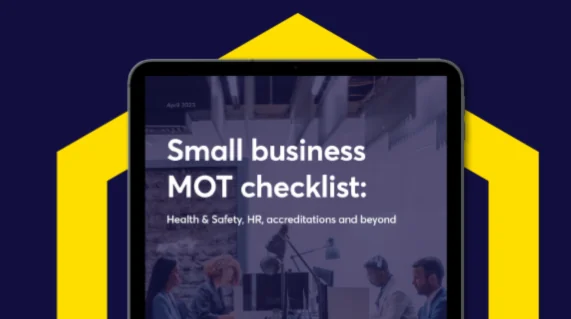COSHH outlines a set of health and safety regulations that must be followed to control exposure to materials in the workplace that can cause ill health.
In this blog, we’ll be taking a closer look at some of the industries that COSHH needs to be applied in, how COSHH risk assessments are utilised, what does COSHH stand for and why they’re essential in each industry.
What Does the Acronym COSHH Stand For?
COSHH is an acronym for Control of Substances Hazardous to Health, and it’s a set of regulations designed to protect workers from exposure to hazardous substances that could cause damage to their health.
What industries are COSHH risk assessments used in?
COSHH risk assessments are vital across a wide range of industries, and their applications vary depending on the nature of work and the hazardous substances involved. Some of the sectors where COSHH plays a crucial role include:
- Manufacturing
- Construction
- Cleaning
- Engineering
- Agriculture
Each industry has its unique set of hazardous substances, and the guidelines for implementing COSHH risk assessments differ accordingly. Adhering to these guidelines is essential in order to protect workers and ensure their well-being.
COSHH in the construction industry
What does COSHH stand for in construction? Well, in the construction industry, workers are often exposed to various hazardous substances like dust, fumes, and chemicals. Hazardous substances might appear in solids, liquids, vapours, gases or microorganisms. Knowing the forms that hazardous substances can take is key to getting the right controls.
Construction dust in particular can be very dangerous to workers and poses a real risk to lung health. Regularly breathing construction dust can cause diseases like lung cancer, asthma, Chronic Obstructive Pulmonary Disease (COPD) and silicosis. It’s believed that over 500 construction workers die from exposure to silica dust each year, and the diseases can also cause permanent disability.
And aside from construction dust, other substances like lead or asbestos are often found in older buildings, solvents are found in paints, thinners, paint strippers, glues and other construction products, and workers might come across harmful microorganisms like bacteria, viruses and fungi.
COSHH plays a pivotal role in ensuring that proper control measures are in place to minimize exposure to such substances. Employers in the construction sector must conduct comprehensive COSHH risk assessments to identify potential hazards and take appropriate measures to protect their workforce.
Need some help controlling COSHH at your construction site? Take a look at all the COSHH risk assessments we have to offer, and check out our building and construction page for more information.
COSHH in the cleaning sector
The cleaning industry involves handling various cleaning agents and chemicals, which can pose health risks to workers if not managed properly. Even water can pose a risk, as having your hands wet for a long time or having them frequently wet during the day can irritate your skin and cause dermatitis. Ingredients in some cleaning products can cause skin allergies and asthma, and others are corrosive and can cause skin burns and eye damage.
What does COSHH stand for in cleaning? COSHH risk assessments in this sector focus on identifying and controlling hazards related to the handling and use of cleaning substances. It’s important to use techniques that minimise contact with harmful substances and minimise leaks and spills – and store cleaning products safely. Personal protective equipment (PPE) might need to be provided like gloves, aprons or eye protection, and it’s important that cleaners practice good hand care, like washing hands properly, drying thoroughly and using skin creams regularly. This all ensures that cleaners can carry out their duties safely and without unnecessary risks to their health.
Not sure where to start with your COSHH risk assessments in your cleaning business? Check out our full COSHH assessment package, designed just for you. Or, for more documents and information, take a look at our industry-specific page.
COSHH for engineering
Engineers often encounter hazardous substances such as lubricants, solvents, and welding fumes during their work. Control measures include dust, fume or vapour extraction, respirators, fluid maintenance and skin checks. For example, metalworking fluids (MWF) can cause dermatitis or other skin diseases, so employers might need to provide PPE to protect workers from MWF and carry out skin checks.
By conducting COSHH risk assessments, engineering companies can establish safe working practices, provide appropriate protective equipment, and minimise the health hazards faced by their employees.
To find out more about the specific engineering COSHH assessments HS Direct can provide, check out our industry page here.
COSHH for agriculture
Hazardous substances in agriculture include dusts from plants, animals or composted materials, regulated products like pesticides or medicines, fertilisers, paints, oils, lubricants, diseases and vehicle exhaust fumes. Grain dust, for example, can cause asthma and other diseases when breathed in. Employers or business owners need to reduce exposure to grain dust as far as they can, and will need to use health surveillance to make sure employees are healthy and using the controls put in place. Employers must conduct COSHH risk assessments to create a safer working environment and adhere to the necessary safety guidelines.
COSHH assessment templates help reduce risk
Since the establishment of COSHH regulations 25 years ago, there’s been a significant reduction in hazardous substance-related ill health and the regulations have helped bring in safe work practices across all industries. By understanding and implementing COSHH risk assessments, you can get peace of mind that you’re complying with Health & Safety regulations and prioritising the wellbeing of your employees.
COSHH assessment support from HS Direct
At HS Direct, our extensive library of over 80 COSHH assessment templates can really simplify the risk assessment process for businesses like yours. These templates provide all the guidance you need for identifying and managing hazardous substances, reducing risks and ensuring a safer environment for you and your employees.
Also available to you is our free COSHH risk assessment template, so you can get on top of controlling risks in your workplace. We also provide a range of detailed templates for method statements and risk assessments too.
If you have any questions about COSHH and want to chat with an expert, just call us on 0114 244 4461 or contact us and one of our friendly team will get right back to you.





